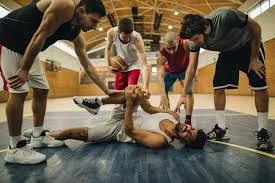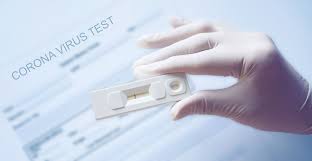
Participation in sports provides physical and mental benefits, though it also carries the risk of injury. Athletes deal with various forms of physical strain that may require specialized attention. Orthopedic clinics can assess and treat sports injuries, helping athletes return to their activities efficiently and safely.
Common Sports Injuries Among Athletes
Sports injuries can vary in severity and type, depending on the activity and movements involved. Some of the more frequent injuries can include:
- Sprains and Strains: These injuries involve the muscles, tendons, or ligaments. Sprains occur when ligaments are overstretched, while strains refer to overstretching or tearing in muscles or tendons.
- Tendonitis: This is inflammation or irritation of tendons, often caused by repetitive movements.
- Fractures: Sports with high physical contact or falls can lead to bone fractures, which requires immediate medical attention.
- Dislocations: These occur when a joint is forced out of its normal position, often requiring professional intervention to properly realign the joint.
- Knee Injuries: Conditions such as anterior cruciate ligament (ACL) tears and meniscus injuries are particularly common in sports involving swift changes in direction or jumping.
Evaluation and Diagnosis in an Orthopedic Clinic
Orthopedic clinics follow procedures to evaluate and diagnose sports injuries. The process may begin with a consultation and physical examination. Physicians examine the affected area while discussing the patient’s symptoms, activity level, and injury history. Advanced diagnostic tools are often used to gain more precise information. These may include imaging techniques such as X-rays, MRIs, or ultrasounds, which help visualize the extent of bone, joint, or soft tissue damage.
Non-Surgical Treatments for Sports Injuries
Many sports injuries can be treated through non-invasive methods at an orthopedic clinic. Non-surgical solutions often provide effective relief, particularly for mild to moderate injuries. Treatments may include:
- Physical Therapy: Rehabilitation exercises and modalities are commonly prescribed to restore strength, flexibility, and mobility.
- Bracing or Immobilization: For joint or ligament injuries, braces or splints may be used to restrict movement and prevent further damage during the healing process.
- Corticosteroid or Platelet-Rich Plasma (PRP) Injection Therapy: Clinics may offer injections to address pain, swelling, or inflammation in specific areas. PRP may also support tissue healing in tendons or ligaments.
- Activity Modifications and Rest: Athletes may be advised to reduce activity levels or avoid certain movements to allow their injuries to heal adequately.
Surgical Interventions
When injuries are severe or do not improve with conservative treatments, surgical options may be considered. Orthopedic clinics staff surgeons specializing in a variety of procedures tailored to specific injuries. Common surgeries for sports injuries include ligament reconstruction, tendon repair, and fracture fixation. Procedures are performed to restore function and stability. Arthroscopic surgery is commonly used to address joint issues, offering faster recovery times and reduced risks compared to open surgery.
Ongoing Recovery and Prevention Support
Orthopedic clinics play a significant role in rehabilitation and prevention after treatment. Recovery plans make sure steady progress is made, often involving follow-up appointments, physical therapy, and gradual reintroduction to activity.
Prevention strategies are also emphasized to reduce the likelihood of future injuries.
Get Professional Care at an Orthopedic Clinic
Orthopedic clinics are an indispensable resource for athletes recovering from sports injuries. Offering expertise in evaluation, treatment, and rehabilitation, clinics provide comprehensive solutions to meet the unique needs of each patient. Whether dealing with a sprained ankle, knee injury, or chronic tendon condition, seeking expert care is a proactive step toward better performance and long-term health.



